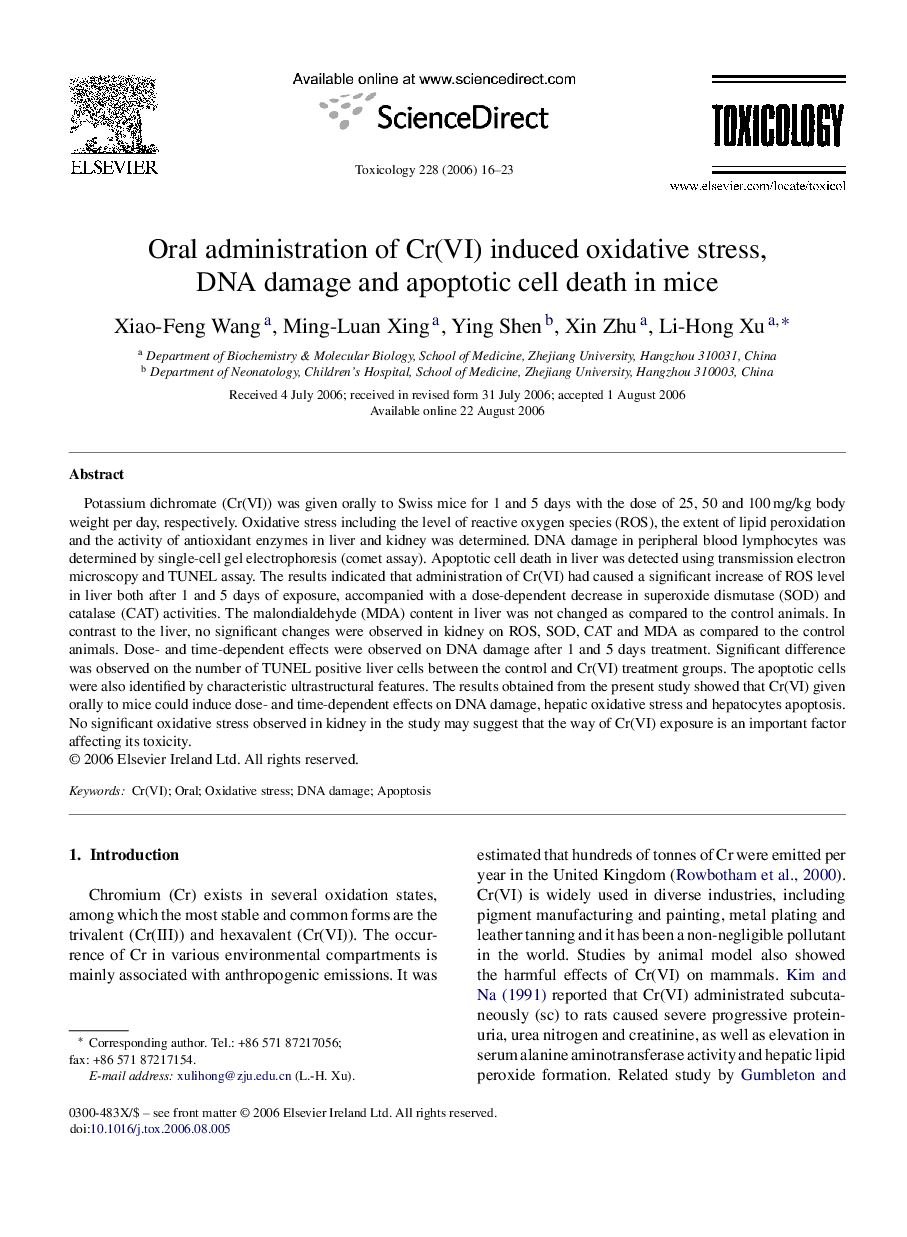| Article ID | Journal | Published Year | Pages | File Type |
|---|---|---|---|---|
| 2597681 | Toxicology | 2006 | 8 Pages |
Potassium dichromate (Cr(VI)) was given orally to Swiss mice for 1 and 5 days with the dose of 25, 50 and 100 mg/kg body weight per day, respectively. Oxidative stress including the level of reactive oxygen species (ROS), the extent of lipid peroxidation and the activity of antioxidant enzymes in liver and kidney was determined. DNA damage in peripheral blood lymphocytes was determined by single-cell gel electrophoresis (comet assay). Apoptotic cell death in liver was detected using transmission electron microscopy and TUNEL assay. The results indicated that administration of Cr(VI) had caused a significant increase of ROS level in liver both after 1 and 5 days of exposure, accompanied with a dose-dependent decrease in superoxide dismutase (SOD) and catalase (CAT) activities. The malondialdehyde (MDA) content in liver was not changed as compared to the control animals. In contrast to the liver, no significant changes were observed in kidney on ROS, SOD, CAT and MDA as compared to the control animals. Dose- and time-dependent effects were observed on DNA damage after 1 and 5 days treatment. Significant difference was observed on the number of TUNEL positive liver cells between the control and Cr(VI) treatment groups. The apoptotic cells were also identified by characteristic ultrastructural features. The results obtained from the present study showed that Cr(VI) given orally to mice could induce dose- and time-dependent effects on DNA damage, hepatic oxidative stress and hepatocytes apoptosis. No significant oxidative stress observed in kidney in the study may suggest that the way of Cr(VI) exposure is an important factor affecting its toxicity.
